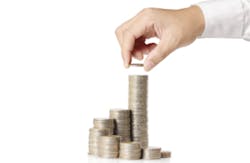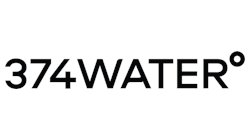Environmental consciousness started out as a trend and is now a full-fledged social and economic movement that shows no signs of stopping. It is in any dealer’s best interest to tap into this movement and market the abundance of “green” products and services with the correct strategies.
As with any buying trend, there are three groups to be aware of: Those who are indifferent to “green” products, those who are already enthusiastic about buying “green” and those who aren’t fully educated about what environmentally friendly products and services can do for them and their business. While the second group will come to you looking for “green” offerings, it is the third that you need to educate with the benefits of these products.
The reasons for customers to use, pretreat, recycle, reuse, repurpose and properly dispose of water treatment materials are numerous, but they can be split into three overlapping categories: Make equipment last longer, save money and comply with government regulations.
Equipment fountain of youth
The cost of equipment, whether it’s a washing machine or water heater for your home or a large-scale reverse osmosis system for your business, can add up quickly. So, most home and business owners want to avoid buying these things more often than they have to. Preventing equipment turnover also serves a green purpose, preventing these products from going into landfills and, with the proper care, reducing the amount of energy they use while they are still in service.
Dealers can communicate the “green” message of extending equipment lifespans to their customers by educating them about proper care of fixtures and systems and helping them see the connection to their bottom line.
One “green” solution that may not be intuitive to many is water softening. Water softeners often get a bad reputation for using large amounts of water: Up to 25 gallons per day or 10,000 gallons per year, according to the U.S. Environmental Protection Agency (EPA). But, the EPA also acknowledges that new technologies have reduced this water consumption "and demonstrated that there is great potential for water savings.”
Despite the water use, water softeners can save you money and keep your equipment from ending up in the landfill too soon. According to the Water Quality Association (WQA), "Softened water keeps your appliances running longer and your pipes cleaner, reduces the amount of detergent you need to use and lets you clean dishes and clothes even better at lower temperatures." Using lower temperatures and less detergent and keeping your pipes and appliances in good repair benefits the environment by using less energy and wasting less equipment, which also saves money.
While commercial businesses and industry can also benefit from softened water, there are many pretreatment opportunities available that can prevent equipment loss on a larger scale.
Chemicals like antiscalants and dispersants help prevent precipitation of minerals on reverse osmosis membranes, which helps the membranes last longer and perform better between cleanings. The antiscalants can also increase recovery rates “so less wastewater goes to a drain,” according to Dave Walker, CEO of Avista Technologies.
“We do some offsite cleaning at our facility. So people will send us membranes … we don’t necessarily bring them back from the dead, but we can prevent them from going to the landfill,” says Walker. “And then there are other companies that do take old, used membranes … and they’ll take them when the membranes are not rejecting well enough [for their original users] and they will find a home for those.”
Committing to compliance
Most homeowners do not have to think about proper disposal guidelines for chemicals and equipment, but this is a common worry for business owners, municipalities and industrial facilities. According to major manufacturers, most proper disposal guidelines are created and enforced by local authorities, so they can change drastically based on location.
“The end users are required to conform to discharge limitations,” explains Walker. “Depending on what countries you might be in, they have particular limits.”
The limits also depend on how waste from a facility is disposed of or whether waste is treated in-house.
Many of the “green” products and services on the market today are required for end customers to meet government guidelines.
Karl Weber, general manager of ACM Technologies, which is licensed by the EPA to regenerate resin by removing metals and other contaminants, says demand for environmentally friendly services has gone up markedly in the past decade.
“More regulations are being enforced [and] people are becoming more aware of the regulations now and they want to be more compliant,” says Weber. “The regeneration is required to put the resin back into a state where the customers can reuse it. If they're using resin as their process they have to do regeneration.”
Even manufacturers have felt the pressure of environmental guidelines and stricter standards. Increasing limits on discharge of phosphates, which are integral to many reverse osmosis systems, has caused companies like Avista to develop phosphate-free chemistries to use with their products.
“[The limits have] caused a shift for us to develop products that don’t contain phosphates,” educates Walker.
Some customers still worry that switching from the traditional chemistries and products to new, green products will decrease performance levels.
“Currently, there’s still a lot of people out there in the industry that do things the old way and they’re now looking to become more in compliance with their discharge issues,” says Weber.
And, our manufacturing experts say, sometimes their worries about performance are true.
“The first thing to note to dealers [is that] not all green products are the same and not all green products actually work well,” asserts Walker. "A lot of green products, they've maybe just removed the phosphates and they haven’t replaced them with anything that's going to work well, like antiscalants and cleaners.”
But, products are available that work as well or even better with environmental safeguards, according to Walker.
“We’ve been able to take phosphates out of antiscalants, replace them with chemistries that are either inert to the environment or they’re biodegradable. We’ve been able to take out the phosphates and take out EDTA, items like that, and replace them with biodegradable components.”
Less money down the drain
Fortunately for dealers, manufacturers say the push for green products is coming from the end users for a variety of reasons, including government regulations and money-saving opportunities.
“The water supply obviously isn’t getting any larger, and we’re dealing with more and more stressed water applications,” says Walker. “So we’re able to help push the envelope to increase those recovery rates. If we can recover more water as the water supplies are changing then we feel that’s good for the environment.”
What is obvious to most people is that “green” products and services are good for the environment, preventing waste of materials and fresh water, preventing pollution by discharge of harmful chemicals and materials into the environment and preventing unnecessary energy use.
Taking measures that protect the environment surely gives homeowners and business owners a general peace of mind, but they may not understand how it directly affects the bottom line and expenses.
Dealers need to communicate that by saving energy, homeowners and business owners save money on energy bills, and the same with water and water bills. By taking proper “green” measures with equipment, end-customers can prevent costly equipment replacement and also prevent more materials in the world’s landfills. And by preventing pollution, commercial, municipal and industrial clients can avoid costly government fines. These “green” measures can keep almost any company or individual in the black when it comes to balancing a budget.


